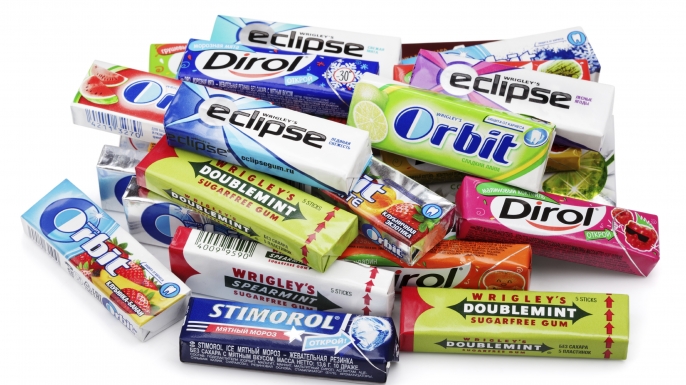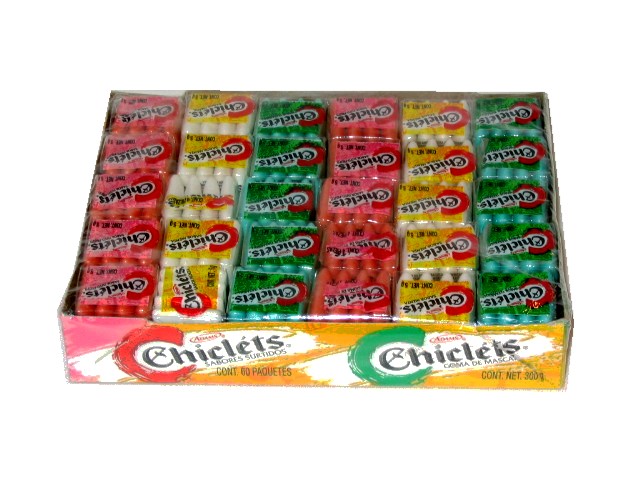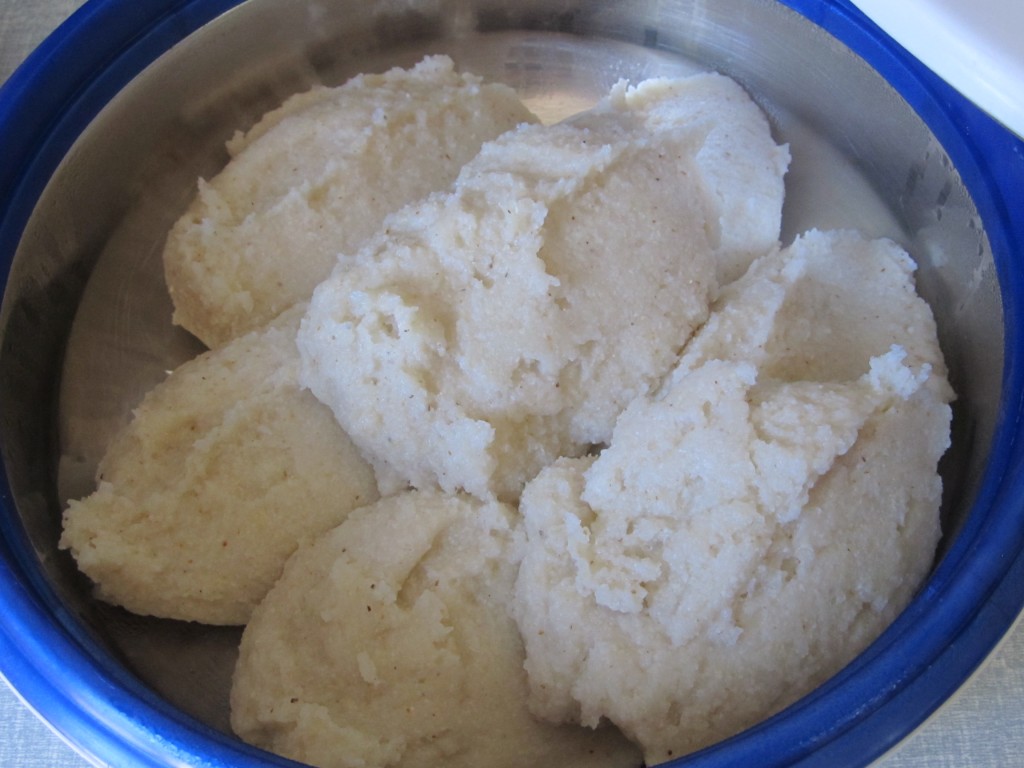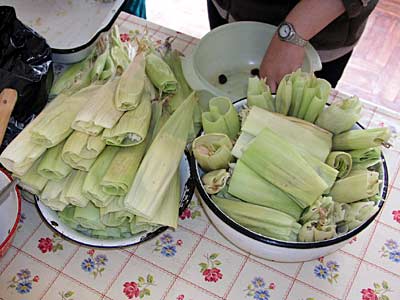Hallaca
The progenitor of the maize body and plantain envelope of hallaca is the Mexican tamal. Tamal-like dishes, under various names, spread throughout the Spanish kingdoms in America as far south as Argentina in the decades following the conquest.

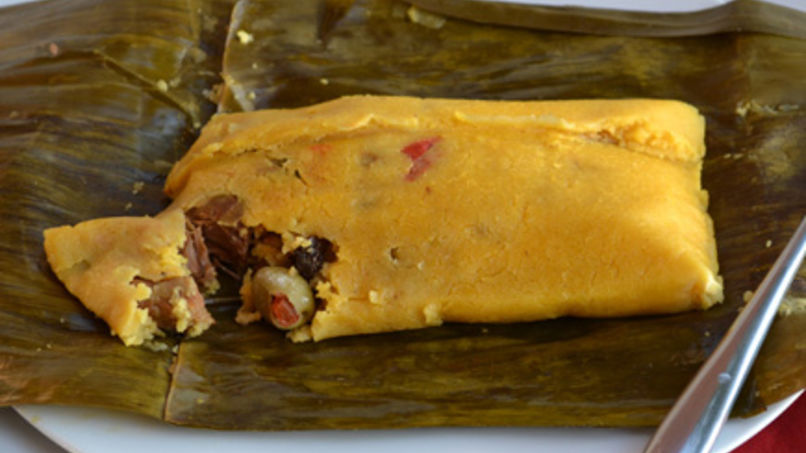
In Latin American cuisine, an hallaca (Spanish pronunciation: [aˈʎaka], [aˈʝaka]; alt. spelling, hayaca and ayaca[1]) is corn dough stuffed with a stew of beef, pork, and chicken, fish or other seafoods in some places, and it is "adorned" with raisins, capers, olives[2] and wedges of fowl meat. Like some Mexican tamales it is folded in plantain leaves, tied with strings, and boiled. It is typically served in Christmas season and has several regional variants in Venezuela, Puerto Rico, Dominican Republic, Ecuador and Colombia. It has been described as a national dish of Venezuela.[1] There are also versions of this dish throughout the Caribbean. In the Dominican Republic, known as Pasteles en hojas made from ground plantains or guanimos made with cornflour stuffed with ground beef or chicken; in Trinidad and Tobago, it is known as pastelle, as in Puerto Rico, known as "pastel" and made with a green plantain, green banana, squash and root vegetables or boniato dough. A characteristic of the hallaca is the delicate corn dough made with consommé or broth and pork fat (manteca) colored with annatto or "onto". Hallacas are also commonly consumed in eastern Cuba.[3]
The progenitor of the maize body and plantain envelope of hallaca is the Mexican tamal. Tamal-like dishes, under various names, spread throughout the Spanish kingdoms in America as far south as Argentina in the decades following the conquest.
Hallaca is a staple part of Venezuelan Christmas celebrations[4] and its preparation is practically limited to that time of the year.The dish is also an icon of Venezuelan multicultural heritage, as its preparation includes European ingredients (such as raisins, almonds and olives), indigenous ingredients (corn meal colored with annatto seeds and onions), and African ingredients (smoked plantain leaves used for wrapping).
In contrast to Venezuelan tradition, hallacas are popular year-round in Ecuador, and several variants exist across the country's different regions. Along with humitas, they are a staple of traditional Ecuadorian cuisine.
Trinidad, which is just 7 miles from Venezuela's east coast hallacas are called pastelle. The preparation is essentially the same with some variation in size and the filling.One of the major herbs in Trinidadian cooking is culantro (called chadon beni locally) and this is a predominant flavour in most seasoned meat. There are also vegetarian fillings made from soya, lentils and various other things to cater to Hindus and other vegetarians. The typical Trinidadian pastelle is generally a lot smaller than its Venezuelan kin.
In Aruba and Curaçao, two islands just off the coast of Falcón state, Venezuela, it is called 'ayaca' or 'ayaka'. The ingredients are pork and chicken stew, or pork or chicken stew, capers, raisins, cashews, bellpepper, pickled baby onions, prunes, and olives. The dough is made from white cornmeal, and the ayaca leaves first spread with lard or oil. Cooked meat and other ingredients are then wrapped in ayaca leaves, tied with string and then boiled for about 2 hours. Flavors in the ayaca vary from family to family, and some add madam Jeanet peppers (very hot). Probably it came to the island by immigrants, or the recipe was borrowed. Like many things from other cultures, it has become a part of the Aruban and Curaçaoan Christmas food traditions adopted as in Trinidad.

In Puerto Rico, the hayaca or hallaca used to be a popular part of the local gastronomy. It is commonly acknowledged, that the name most definitely came from indigenous backgrounds. However, even the locals have a hard time distinguishing the hayaca, from the "alcapurria", "guanimes", "pasteles" and some also call them "empanadas", since they are visually, very similar. In simple terms, the hayaca from Puerto Rico is not made with corn nor fried, boiled or steamed. It is baked, traditionally, in open-wood-fire to a smokey and toasted outer layer. Different from other cultures, the unique mix of ingredients like the cassava, milk, annatto, banana leaf and interesting style of open-wood-fire cooking, only allows to think that this local version might have been introduced by a combination of the Taíno tribes and either African slaves or Spaniards during the Spanish colonization. Because of the long and elaborate process and skills that takes to prepare, the hayaca is now rarely available but still found, mostly in coastal, family-owned restaurants and other small establishments known as "kioscos" where there are still strong ties to native heritage and classic slow cooking skills.


